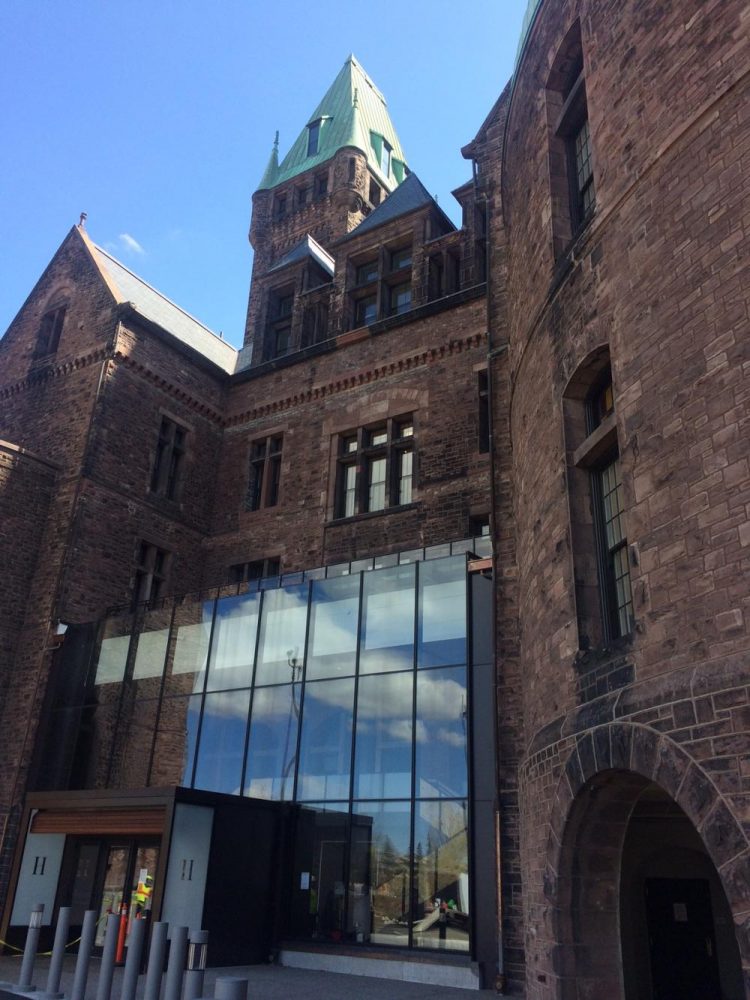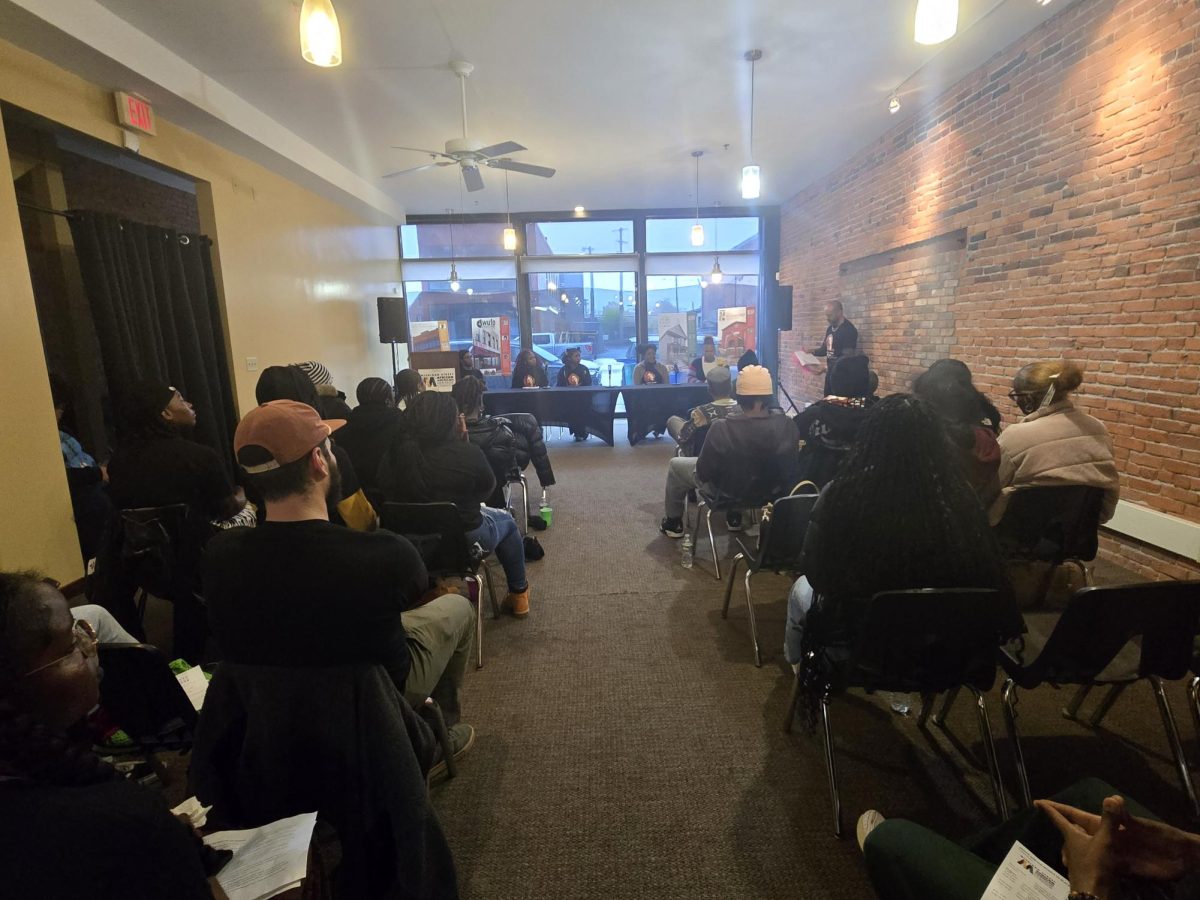Hotel Henry to continue historic connection between Buffalo State and Richardson-Olmsted Complex
SUNY Buffalo State’s Hospitality and Tourism Department has worked with Hotel Henry to create a program for students to work at the next-door hotel and conference center.
Highlighting the redevelopment of the Richardson-Olmsted Complex is Hotel Henry, an urban resort conference center that opened on April 30. The innovative hotel and conference center embraces the architectural legacy of the Richardson-Olmsted Complex while implementing modern redesign. Roughly one-third of the Richardson Olmsted Complex has been dedicated to Hotel Henry.
May 1, 2017
In 1870, architect Henry Hobson Richardson in collaboration with landscape planner Fredrick Law Olmsted designed what was going to become the Buffalo State Asylum for the Insane. The entire structure would come to be known as the Richardson – Olmsted Complex; but now, the historic structure will be called Hotel Henry.
For the past several years the Richardson-Olmsted Complex has undergone massive renovations to become an 88-room hotel and urban conference center. Diana Principe, a partner of Hotel Henry, described the process that brought Hotel Henry to fruition.
“Hotel Henry has been in the works for several decades. It started with a number of constituents and grassroots movements coming together,” Principe said. “About 15 years ago, the Richardson-Olmsted Corporation was formed. They wanted to save the site for future generations. Soon thereafter it achieved National Historic Landmark status. We wanted to find the highest and best use for the site.
“The main concern was running a business and sustainability for the community. We found that a hospitality business would be the best. The main concern was figuring out what kind of business could be sustained and we reasoned that a hospitality business would be the best use.”
Principe also said that the hotel will expand to the central tower and the other surrounding buildings on the site. One third of the complex is currently dedicated to Hotel Henry. The other parts are still unutilized. Principe said phases two and three of redevelopment will repurpose the remaining empty facilities, but the Richardson-Olmsted Corporation has much to do before getting those phases in motion.
Monica Pellegrino-Faix, the Executive Director of the Richardson-Olmsted Complex, said the site would have other uses separate from the hotel that have not yet been determined.
“The uses that we looked at in the 2008 Master Plan are still the uses that make sense today, because Buffalo has had a resurgence, “ Pellegrino-Faix said. “We’ve been looking at our business model, and altogether, we have eight buildings remaining. Some of the uses we’ve talked about are residences for people that want to live near a college, particularly for empty-nesters who want be able to walk to art galleries, and want to be able to walk to the Elmwood Village.
“Other potential uses could go toward partnering with the college for things that are more community based. If you go to college and you’re not from there it can be very confusing to find your way around. The last category that we talked about is arts and culture, considering that it’s in an arts district. It [the hotel] ended up being the right fit because there is a lot of need at the college and in the community for conference center and hotel space.”
Pellegrino-Faix also spoke about how the Richardson-Olmsted Complex went from abandonment to its current state.
“It’s a 145-year-old complex of buildings that originally was 200 acres including the land that the college is on,” Pellegrino-Faix said. “It was intended to be a full state-of-the-art environment for people with mental illness. It served that function for 100 years and then it was abandoned. We worked on a master plan about eight years ago and we had a lot of public input.”
In order for the building to leave behind its past as an asylum, major changes had to be made. Aside from the alterations that created the hotel rooms, the complex underwent massive modifications to better suit the new purpose of the building.
“One particular modification to the building is the new class entryway that faces Buffalo State College. Prior to this it was a brick wall,” Pellegrino-Faix said. “That part of the building was originally the rear and was used as a service entrance. Now it doesn’t feel like you’re walking into a basement; instead, it feels like you’re walking into a very welcoming place.
“Another modification made was the addition of elevators because there were no elevators here. What I find remarkable about these elevators is that they seem like they belong in the design but really they were inserted.”
The hotel will also feature a restaurant named 100 Acres. The name of the restaurant comes from the land Buffalo State is on. The land used to be a farm that was a part of the Buffalo State Asylum for the Insane. The restaurant will host a soft opening on May 2. The large lawn that faces Forest Avenue was originally a 150-car parking lot. In 2013 the lot was refurbished.
“It’s an imposing building – everything about it says stay away with its massive stone structure; it can be an imposing,” Pellegrino-Faix said. “The parking lot added to this effect. Redesigning the parking lot into a lawn allows people and students to feel that they are welcome.”
The hotel plans to create a partnership with Buffalo State. Dr. Kevin Mulcahy, the head of the Hospitality and Tourism department at Buffalo State discussed the collaboration.
“We’re going to be partners in a program that allows our students to go over there and get some exposure to all the things they will be doing over there,” Mulcahy said. “They’ve got events, hotel catering and things like that. They officially open in April, but in the fall, we’re going to select a group of students to go over there and do some things in various departments.
“The partnership will give those students who are concentrating in Hotel & Tourism more of an opportunity to really direct their career.”
The program will be offered as a practicum using a selective Professional Development School program. Only students that have taken the Hotel and Restaurant Management course, HTR 368, will be eligible to participate in the program. The program will require students to work about ten hours a week.
“The first semester of the program would entail students working in several departments, which include Rooms Division, Food and Beverage, Catering and Conference, Sales and Marketing. During the second semester students will be working in specific departments. Although the first program will only have ten students it is possible that it could expand to include more students.”
Diana Principe mentioned that the program has potential to expand from just the Hospitality and Tourism Department to some of the other departments on campus.
“The program that the Hospitality and Tourism department has with Hotel Henry, aptly named the Hotel Henry Practicum Experience, will possibly partner with other departments and Buffalo State College’s campus. We are a technology-based conference center; there are a variety of departments that could work with Hotel Henry.”
Hotel Henry is having a soft opening on April 30; its restaurant, 100 Acres, is having a soft opening on May 2.
email: viera.record@outlook.com





